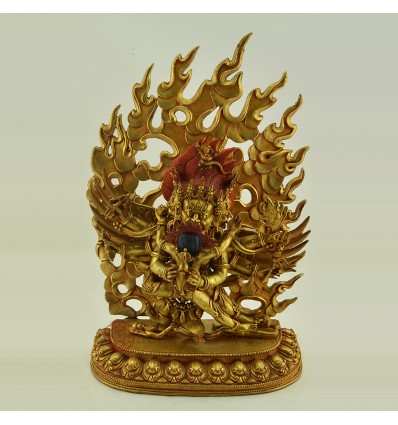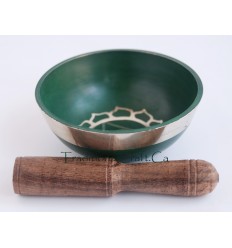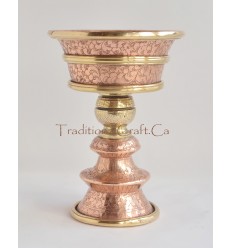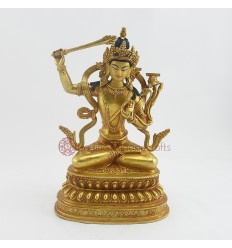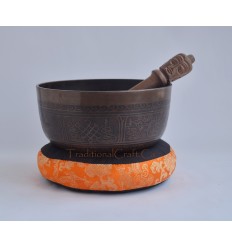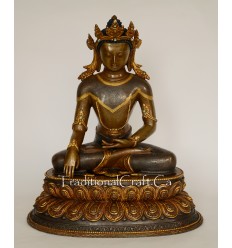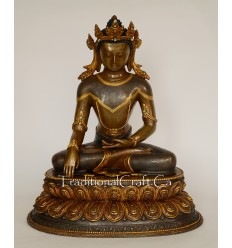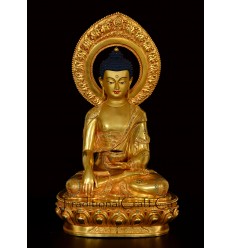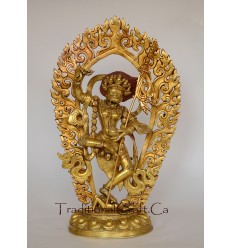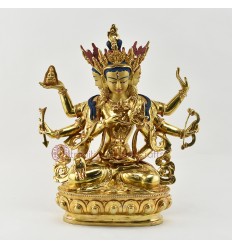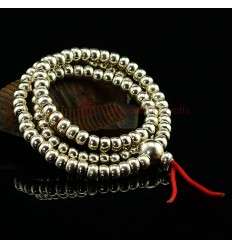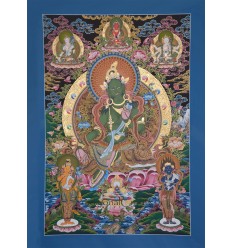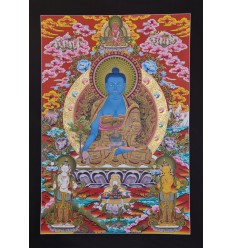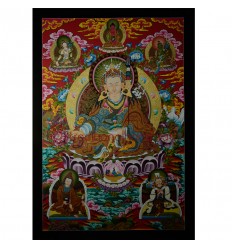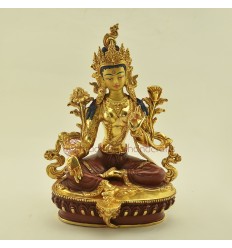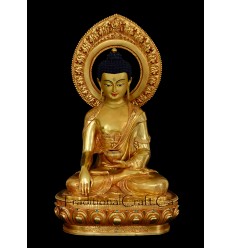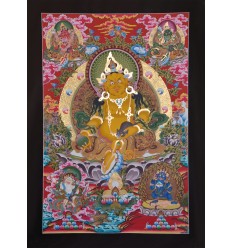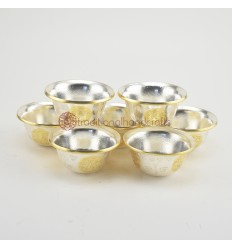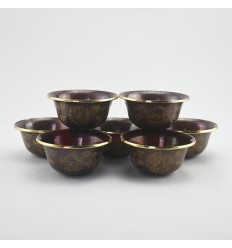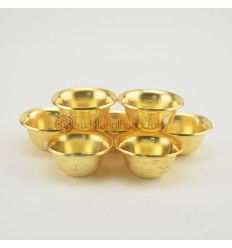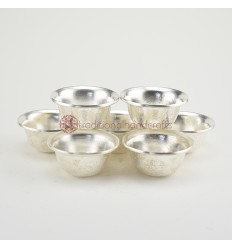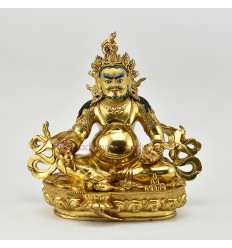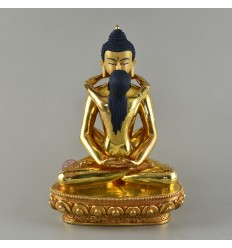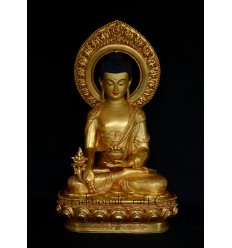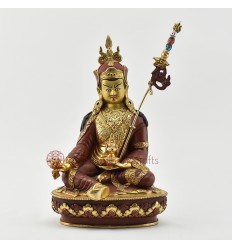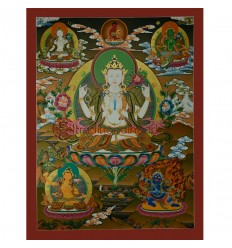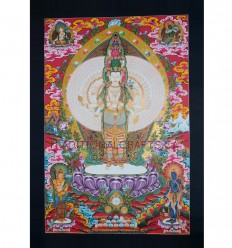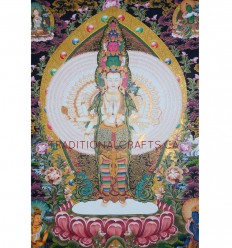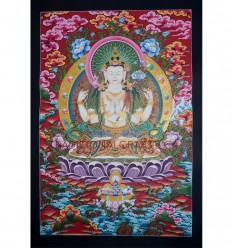No products
Product successfully added to your shopping cart
There are 0 items in your cart. There is 1 item in your cart.
Finely Hand Carved 16" Vajrkilaya Statue 24 Karat Gold Gilded with Face Painting
761768118726
New
Fine Quality Hand Made 16" Vajrkilaya Statue From patan,Nepal Lost Wax Method, Copper Alloy 24 Karat Gold Gilded with Face Painting.
1 Item
Warning: Last items in stock!
|
Name |
Vajrakilaya Statue |
|
Height |
16” with frame |
|
11.75” without frame |
|
|
Width |
11” |
|
Depth |
5.25” |
|
Material |
Lost Wax Method, Oxidized Copper Alloy. |
|
Actual Weight |
6.554 Kg. |
|
Ships From |
Patan, Nepal |
|
Shipping Provider |
Express Shipping Service |
|
Shipping Time |
Usually ships within 48 hours. Allow 5 – 7 business days for deliver within worldwide. |
|
Insurance |
Insurance is included in the shipping cost. |
Vajrakilaya – Dagger of Indestructible Reality
Vajrakilaya, also called Vajrakila and Dorje Phurba, is a wrathful Tantric meditation deity whose practices are most often performed by disciples of the Nyingma order. Vajrakilaya's practices are particularly effective methods for removing obstacles and obstructions, and for destroying and purifying negative forces. Vajrakilaya embodies the powerful enlightened activity of all the Buddhas, and his special emblem - the ritual phurba dagger - represents the sharp point of wisdom fixed immobile on emptiness through the power of single-pointed concentration.
When the great Guru Padmasambhava first arrived in Tibet, the first trasmission that he gave to his twenty-five "heart disciples" were the practices of the Varjakilaya Tantra. Padmasambhava gave these teachings in order to eliminate obstructions to the propagation of Buddhadharma in Tibet.
Gestures and Attributes
Vajrakilaya has three heads, six arms, and four legs. His two main hands embrace his consort Khorlo Gyedunma, and hold the magic phurba dagger. The lower blade of his phurba represents method or skillful means, and its upper handle represents wisdom. The triple-edged nature of the blade symbolizes the severance of the three root delusions of hatred, ignorance, and desirous attachment, and its triangular single-pointed shape symbolizes the realization of emptiness. Vajrakilaya's other right hands hold five- and nine-pronged vajras, representing his power and indestructibility. His other left hands hold a flaming triple wishfulfilling jewel, and a trident which symbolizes his abandonment of the imprints of the delusions of the three realms.
He wears an elephant skin across his back, showing that he has abandoned the ignorance of self-grasping. A human skin is hung diagonally across the front of his body, indicating his conquest of the self-cherishing ego. His loin cloth is made of tiger skin, symbolizing his abandonment of hatred, and he wears a long necklace of freshly severed human heads, representing his abandonment of ordinary appearances and conceptions.
Vajrakilaya's consort, whom he holds in a passionate embrace, complements his masculine skillful methods with her feminine wisdom. They each wear crowns adorned with five human skulls, indicating their purification of the five aggregates. Khorlo Gyedunma holds a skullcup brimming with the blood of the four maras, symbolizing her experience of the clear light of bliss, and her victory over uncontrolled death. They stand together in the warrior's pose, with one leg bent and the other extended, surrounded by the blazing fire of exalted wisdom which annihilates all delusions and consumes neurotic states.
About this Sculpture
Expertly cast from copper alloy using lost wax method and 24 karat gold gilded, this sculpture is a profoundly wrathful representation of Vajrakilaya. This sculpture was individually handcrafted in Patan, Nepal by master artisans of the Shakya clan who are considered among the best in the world. These craftsmen are the modern heirs to a centuries-old tradition of creating sacred art for use in temples and monasteries. The fine metalworking techniques have been passed down from generation to generation since ancient times.
No customer comments for the moment.


